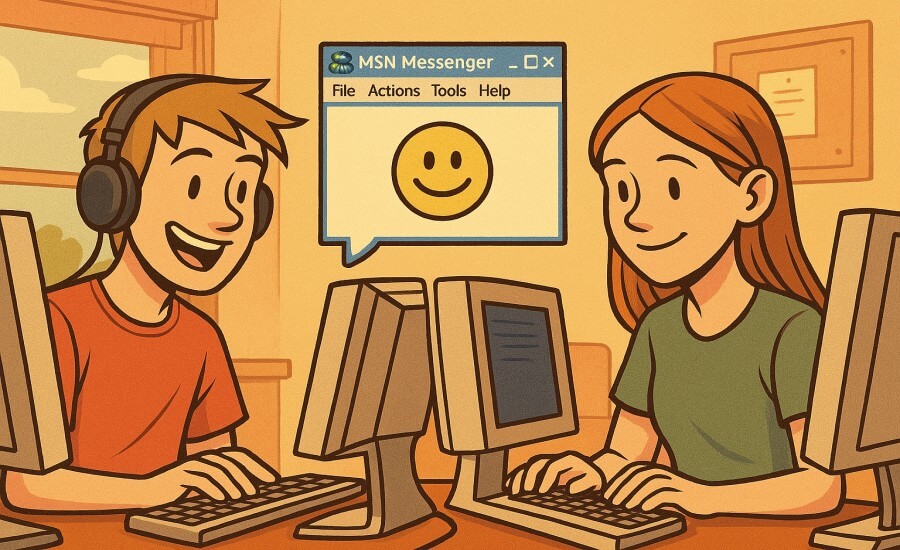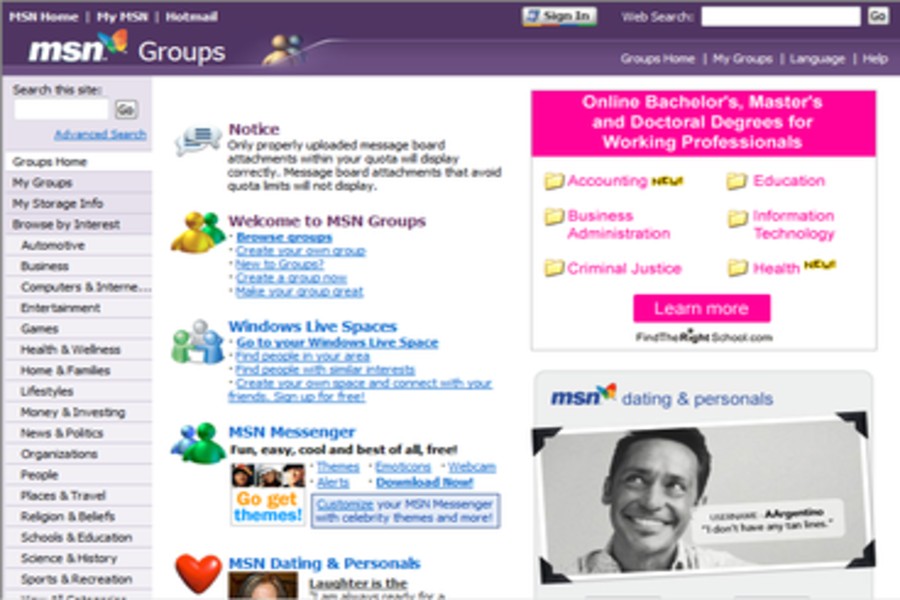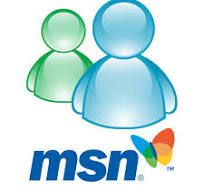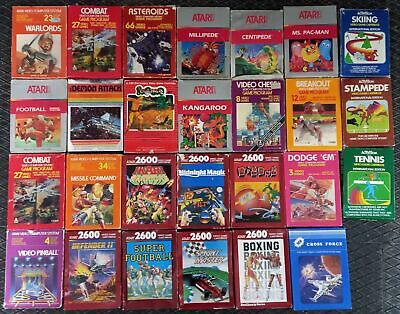
The school bell rings. You race home, maybe grabbing a quick samosa on the way. The real destination? The family computer, tucked away in the study or perhaps a bustling cyber cafe down the street here in Vadodara. Booting up Windows XP feels like an eternity. Maybe you hear the screech and static symphony of the dial-up modem, or perhaps you’re lucky enough to have that nascent BSNL broadband connection. Welcome to the world shaped by MSN Messenger.
Then, the moment arrives. You double-click that icon – the two little green figures, later the butterfly – and type in your Hotmail address and password. The iconic badoop-badoop sign-in sound echoes – a Pavlovian bell for millions of teenagers globally.
Your buddy list springs to life, a vibrant cascade of friends’ names encoded in bizarre symbols and colors, their current status meticulously displayed. Instantly, half a dozen chat windows pop open, flashing orange in the taskbar. Forget the landline, forget waiting for emails. You’ve arrived. For the next few hours, this isn’t just a computer screen; it’s your entire social universe.
The Log-In Ritual (Late 1999 – Early 2000s): “Connecting a Generation”

Launched by Microsoft on July 22, 1999, MSN Messenger Service entered an already buzzing Instant Messaging (IM) scene populated by pioneers like ICQ and AOL Instant Messenger (AIM), and strong competitors like Yahoo! Messenger (which was hugely popular in India).
But MSN had a powerful weapon: its integration with the colossal Hotmail user base and the ubiquitous Windows operating system. Signing up was easy if you had a Hotmail account, and soon, those little green figures seemed to be everywhere.
The core magic was simple but revolutionary for its time: real-time text chat and presence awareness. Seeing your friends pop up on your “buddy list” the moment they logged in felt electric. You could instantly fire off a message – “hey,” “wudup?”, “u online?” – and potentially get a reply seconds later.
This replaced the need for planned phone calls or the delay of email for casual, spontaneous conversation. It wasn’t just communication; it was connection, immediate and persistent (as long as you were both logged in).
The early versions were basic, focusing purely on text chat and that crucial buddy list, but they laid the foundation for a cultural phenomenon. The speed of adoption was staggering, reaching over 700,000 users globally within its first week.
Tech Spotlight: Core IM & Presence
- Platform: Desktop application for Windows (later Mac versions too).
- Core Features: Text-based instant messaging (one-to-one, early group chat), Buddy List showing contacts’ online/offline status (“presence”), integration with Hotmail/.NET Passport accounts for login.
- Technology: Proprietary Microsoft Messenger service protocol.
- Competitors: AOL Instant Messenger (AIM), ICQ, Yahoo! Messenger.
- Significance: Brought real-time chat and presence awareness to a massive user base via Microsoft’s ecosystem, fundamentally changing expectations for online communication beyond email.
Milestone Markers
- 1999 (July 22): Microsoft launches MSN Messenger Service 1.0.
- Early 2000s: Rapid user growth, competing fiercely with AIM and Yahoo! Messenger. Becomes a standard application installed on millions of home PCs and internet cafe terminals globally, including India.
Parallel Developments
- Late 1990s: Widespread adoption of home PCs. Internet access grows via dial-up. Hotmail becomes a dominant free webmail provider.
- Early 2000s: Dot-com bubble bursts, but internet usage continues to climb. Early broadband starts rolling out.
User Experience Snapshot
Remember adding your friends’ Hotmail addresses meticulously? The thrill when someone accepted your contact request? Seeing that little notification pop up: “[Friend’s Name] has just signed in.“? Sending a message and watching for the “[Friend’s Name] is typing…” notification, holding your breath for the reply? It was simple, text-focused, but utterly captivating – a direct line to your friends’ digital presence.
Price Point Perspective
MSN Messenger was completely free to use (aside from internet connection costs – dial-up per minute or flat-rate broadband/internet cafe hourly fees). This free access, tied to free Hotmail accounts, was a major driver of its massive adoption, especially among cost-conscious teenagers. It offered a free alternative to costly SMS messages.
What We Gained / What We Lost
- Gained: Instant, real-time text communication with friends. Awareness of friends’ online availability. A digital social space independent of physical location. A free alternative to SMS.
- Lost: The era where online communication was primarily asynchronous (email). Perhaps the necessity for planning phone calls.
Unexpected Consequences
- Created the expectation of immediate digital availability among peers.
- The buddy list became an early form of curated social network.
- Disputes arose, like AOL attempting to block MSN users from messaging AIM users, highlighting early interoperability battles.
Industry Voice
“Consumers are installing MSN Messenger Service at an unprecedented rate… The early popularity of this service is a clear indication that we’ve struck a chord with consumers by offering functionality that they are demanding.” – Brad Chase, Microsoft VP (July 1999, just days after launch).
The Golden Age of Customization (Early-Mid 2000s): “Emoticons, Nudges & Nicknames ;-)”
![]()
If the early years were about establishing connection, the early-to-mid 2000s were about personalization and expression. MSN Messenger rapidly evolved beyond plain text, introducing a suite of features that became the bedrock of teen digital culture in this era (especially with versions 6.0 in 2003 and 7.0 in 2005).
- Custom Display Names: No longer just your name, nicknames became canvases for creativity (and angst). Teens used special ASCII codes ([c=4], (F)) to add colors, symbols (like (*), (L)), and formatting. Names became elaborate strings like ••.•´¯•.•• ♥ ŞΔŘΔĦ ♥ ••.•´¯•.•• or reflected current moods or song lyrics.
- Display Pictures: Static icons gave way to personal photos (often grainy webcam shots or scanned pictures) or downloaded avatars representing interests.
- Custom Emoticons: Beyond the built-in smileys :), users could import their own tiny animated GIFs. This exploded – spinning logos, dancing characters, memes-in-the-making – allowing for highly personalized visual shorthand. Shortcuts were key ((yn) for crossed fingers, custom ones like 111 for a specific smiley).
- Winks & Nudges: Winks were large, screen-filling animations (often loud) sent to get attention. The Nudge was even more direct – it violently shook the recipient’s chat window, impossible to ignore. Often used playfully between friends, or weaponized to demand a reply.
- “What I’m Listening To”: Integration with Windows Media Player (and later Winamp via plugins) allowed your status to automatically show the song title and artist you were currently playing – a crucial form of passive social signaling and musical taste display.
- Backgrounds: Chat windows could be customized with different backgrounds.
This explosion of customization turned MSN Messenger into a vibrant platform for performing identity. Parallel to this, MSN Speak evolved – a lexicon of abbreviations and netspeak (BRB, LOL, G2G, TTYL, IDK, ROFL, POS – Parent Over Shoulder) became essential for rapid-fire chat.
Tech Spotlight: Customization Features
- Display Names: Allowed text formatting codes for color, symbols.
- Display Pictures: User-uploaded images/avatars.
- Custom Emoticons: Ability to import and assign shortcuts to user-provided animated GIFs.
- Nudge/Winks: Pre-defined or custom full-screen/window-shaking animations triggered by sender.
- Now Playing: Integration with media players to display current track in status.
- Significance: Transformed IM from basic text chat into a rich medium for self-expression, social signaling, and playful interaction, perfectly aligning with teenage identity formation.
Milestone Markers
- 2003 (July): MSN Messenger 6.0 released, major overhaul with more customization (avatars, backgrounds).
- 2005 (April): MSN Messenger 7.0 released, introducing Winks and other enhancements.
- Mid-2000s: This feature set defines the peak MSN Messenger cultural experience for teens. Custom emoticon packs are widely shared online.
Parallel Developments
- Early-Mid 2000s: Broadband adoption increases, making photo/music sharing easier. Digital cameras become affordable. MP3 players (like the iPod) explode in popularity. Early social networks (Friendster, MySpace, Orkut) emerge but IM remains dominant for real-time chat.
User Experience Snapshot
Remember spending ages crafting the perfect cryptic nickname using symbols and song lyrics? Hunting online for cool animated emoticons to add to your collection? The slightly panicked feeling when you accidentally sent a nudge? Carefully curating your music playlist knowing your crush might see what you were listening to? MSN wasn’t just chat; it was a performance, a constantly updated reflection of your teenage self, broadcast to your buddy list.
Price Point Perspective
Still free. The ‘cost’ was time spent customizing, chatting, and potentially neglecting homework. Access via internet cafes in India remained popular, with hourly rates being the main expense for many.
What We Gained / What We Lost
- Gained: Rich tools for online self-expression and identity play. A unique visual and interactive language (emoticons, nudges). Deeper social integration (“Now Playing”).
- Lost: Simplicity. Chat windows could become visually chaotic. The potential for communication reliant solely on inside jokes and custom emoticons.
Unexpected Consequences
- Created distinct online social etiquette (nudge wars, interpreting away messages, buddy list politics).
- Normalized the use of graphical emoticons/emoji in digital communication.
- The “Now Playing” feature arguably influenced later music sharing and social music platforms.
Industry Voice
“Hitting the nudge button wouldn’t just ping your mate an alert… instead it shook the whole sodding conversation window in dizzying fashion… It really was the most annoying feature going, but we’d love it back…” – Digital Spy (Reflecting on the love/hate relationship with Nudges).
The Social Hub Supremacy (Mid-Late 2000s): “Life on the Buddy List”

By the mid-to-late 2000s, MSN Messenger (rebranded as Windows Live Messenger around 2006) was arguably at the zenith of its cultural power, especially for teenagers. With a global user base peaking around 330 million monthly active users in 2009, it was the digital social hub for a generation before Facebook achieved true global dominance and mobile messaging took over.
Life revolved around the buddy list. Logging on after school wasn’t optional; it was essential for staying in the loop. Social status could be subtly gauged by who was on whose list, and who appeared “Online,” “Away,” “Busy,” or, strategically, “Appear Offline.”
Custom status messages evolved from simple away notes to cryptic song lyrics, inside jokes, or passive-aggressive digs. Group chats became virtual common rooms for planning weekend outings, dissecting gossip, or “collaborating” on homework (often just sharing answers).
Relationships were forged and fractured in Messenger windows. Asking someone out via IM, flirting with emoticons and carefully crafted messages, navigating jealousy sparked by seeing who someone else was talking to, and even breaking up – it all happened here.
The platform facilitated constant, low-stakes interaction that reshaped teen social dynamics. In India, during this period, MSN and competitors like Yahoo! Messenger were vital tools, often used more than expensive SMS, connecting school friends, college groups, and even family across distances, frequently accessed through ubiquitous cyber cafes.
Tech Spotlight: Mature IM Platform
- Features: Robust presence system (Online, Away, Busy, Appear Offline), customizable status messages, stable group chats, file transfer (photos, music), integrated games (Minesweeper Flags, etc.), webcam support becomes more common.
- Scale: Hundreds of millions of active users globally.
- Cultural Role: Primary online social space for teenagers and young adults. Central tool for communication, relationship management, identity performance, and group coordination. Essential communication infrastructure in many regions like India.
- Significance: Represented the peak of desktop-centric instant messaging as the core of online social life for a generation, before the shift to integrated social networks and mobile-first platforms.
Milestone Markers
- ~2006: Rebranding to Windows Live Messenger as part of Microsoft’s broader “Live” initiative.
- ~2009: Reaches peak user base estimated at 330 million monthly active users.
- Mid-late 2000s: Dominates the IM landscape in many regions, including significant popularity in India alongside Yahoo! Messenger and Google Talk. Orkut rises as a major social network in India/Brazil, providing competition for social time.
Parallel Developments
- Mid-late 2000s: Facebook expands beyond college campuses and grows rapidly. YouTube becomes the dominant video platform. Broadband becomes more common globally. Early smartphones appear, but mobile internet is often slow and expensive.
User Experience Snapshot
Remember coordinating plans with five friends simultaneously in a group chat? The anxiety of waiting for a crush to reply, analyzing their status message for hidden meanings? Using “Appear Offline” to avoid talking to someone? Spending hours perfecting your buddy list groups? MSN Messenger was the digital bloodstream of teenage social life – often dramatic, sometimes trivial, but always immediate and engaging. For Indian youth, juggling MSN chats at a cyber cafe while keeping an eye on the clock was a common experience.
Price Point Perspective
Still free software. The cost remained internet access. The rise of flat-rate broadband in some households removed the per-minute anxiety of dial-up, encouraging even longer chat sessions. Cyber cafe usage remained a factor in India.
What We Gained / What We Lost
- Gained: A powerful, centralized hub for real-time peer communication and social management. Tools for intricate online social performance. Strengthened peer group cohesion through constant contact.
- Lost: Clear boundaries between online and offline life. Potential for increased social drama and misunderstandings due to text-based communication. Focus and attention span (constant notifications!).
Unexpected Consequences
- Solidified netspeak and emoticon use as standard digital communication elements.
- Created lasting social anxieties related to online status and responsiveness.
- May have contributed to changing patterns in dating and relationship initiation among youth.
Industry Voice
“MSN’s instant messenger is proving to be the easiest way for Indians to stay in touch… 77 per cent use IM everyday… 62% of men and 59% of women say they use IM more than SMS.” – Business Standard (Reporting on a 2004 survey about MSN usage in India).
The Fading Notification (Late 2000s – Early 2010s): “Signing Off: Social Media & Mobile Rise”

The reign of MSN Messenger, though powerful, began to wane in the late 2000s and early 2010s. The digital landscape was shifting rapidly, and the desktop-centric IM client started to feel less essential.
The Rise of Social Networks: Facebook (and initially Orkut in key markets like India and Brazil) offered a different paradigm. Instead of just real-time chat, they provided persistent profiles, photo albums, status updates visible to a network, groups, events – a more holistic social space. While Facebook integrated chat, it subsumed many of the functions MSN was used for (sharing news, planning events, passive social awareness) into a broader platform.
The Mobile Messaging Revolution: This was perhaps the killing blow. BlackBerry Messenger (BBM) showed the power of free, mobile-native instant messaging, becoming hugely popular among teens with BlackBerrys. But it was WhatsApp (launched 2009), along with similar apps like Viber and WeChat, that truly democratized mobile chat.
Available across different smartphone platforms (iOS, Android, BlackBerry, Nokia) and using mobile data instead of costly SMS, WhatsApp offered a seamless, always-on connection tied to your phone number, not a desktop login. As smartphones became affordable and mobile data packs cheaper (a huge factor in India), teens shifted their conversations to these mobile-first platforms. PC-based MSN felt increasingly inconvenient.
Microsoft’s Strategic Shift: Recognizing these trends, Microsoft acquired Skype for a massive $8.5 billion in May 2011. Skype offered strong VoIP (Voice over IP) and video calling features, along with IM, and had a large existing user base. Microsoft saw Skype as its future communication platform. In November 2012, Microsoft announced it would retire Windows Live Messenger globally and transition users to Skype.
Tech Spotlight: Social Networks & Mobile IM Apps
- Social Networks (Facebook, Orkut): Offered persistent profiles, asynchronous updates (wall posts), photo sharing, groups, events, integrated chat – competing for users’ social time and functions previously served by MSN.
- Mobile IM (BBM, WhatsApp): Provided free, real-time messaging directly on smartphones using mobile data. Always-on connectivity, tied to phone numbers, replaced the need for PC login. Became the primary mode of instant communication for many.
- Skype: Acquired by Microsoft in 2011. Offered robust VoIP/video calling alongside IM. Became Microsoft’s designated replacement for Messenger.
- Significance: These platforms offered either broader social features (Facebook) or superior mobile convenience (WhatsApp), making the standalone, primarily desktop-based MSN Messenger feel outdated and leading Microsoft to consolidate its efforts around Skype.
Milestone Markers
- Late 2000s: Facebook’s global user base explodes. Orkut dominates in India/Brazil before Facebook takes over. Smartphone adoption begins to accelerate. WhatsApp launches (2009).
- 2011 (May): Microsoft acquires Skype.
- 2012 (November): Microsoft announces the retirement of Windows Live Messenger and migration to Skype.
- 2013 (April 8 onwards): Global shutdown of Messenger service begins (excluding China). Users prompted to upgrade/migrate to Skype.
- 2014 (October 31): Messenger service officially shuts down in China, marking the final end.
Parallel Developments
- Late 2000s/Early 2010s: Rapid smartphone adoption worldwide. Mobile internet speeds improve (3G widespread). App stores become central to software discovery on mobile.
- Early 2010s: Instagram launches, further emphasizing mobile visual sharing. WhatsApp’s user base skyrockets.
User Experience Snapshot
Remember when your friends started spending more time updating their Facebook statuses than their MSN away messages? Or when getting a WhatsApp message became more common than an MSN notification? The shift felt gradual, then sudden. Logging into MSN started to feel quieter, with fewer friends online.
Eventually, you got the prompt to migrate to Skype, maybe did it, maybe just stopped logging in altogether as your social life moved primarily to Facebook and WhatsApp on your phone.
Price Point Perspective
Facebook was free. WhatsApp initially had a tiny annual fee but effectively became free, offering huge savings over SMS. This further incentivized the shift away from PC-based platforms tied to home internet or cyber cafe costs.
What We Gained / What We Lost
- Gained: Integrated social networking features (Facebook). Ubiquitous, free mobile messaging (WhatsApp). Robust video/voice calling (Skype). Constant connectivity via smartphones.
- Lost: The specific culture and feature set of MSN Messenger (custom emoticons, nudges, elaborate names). The PC-centric IM hub. A generation’s primary digital hangout.
Unexpected Consequences
- The migration from Messenger to Skype was met with mixed reactions; many users felt Skype lacked the personality and features they loved in MSN.
- The decline of MSN coincided with the decline of cyber cafes in many areas, as mobile internet became the primary access method.
- Created a generation gap in communication styles between those who grew up on MSN and those who grew up on mobile-first apps.
Industry Voice
“Because they bought Skype of the bigger user base to gain market share. Two services with the same purpose would blow their new investment. So they migrated WLM user base to Skype.” – Reddit user ronnysteal (Explaining the strategic rationale).
The Echo in Our Feeds (Present): “MSN’s Lasting Legacy”
Windows Live Messenger signed off for the last time globally in 2014, but its ghost still haunts our digital interactions. While the platform itself is gone (though some unofficial servers keep modified clients alive for die-hard fans), its influence on how we communicate online, especially for the generation that grew up with it, is undeniable.
MSN Messenger normalized real-time digital chat as a primary form of social interaction for millions of young people. It popularized features we now take for granted:
- Presence & Status Updates: Modern apps still show online/offline status (though often simplified), and ephemeral “Stories” or status features echo MSN’s customizable away messages.
- Graphical Emoticons/Emoji: MSN was key in transitioning from text smileys 🙂 to rich, graphical, and even animated expressions. The emoji keyboards on our phones are direct descendants.
- Real-time Typing Indicators: That stressful/exciting “Contact is typing…” notification lives on in nearly every modern chat app.
- Casual, Abbreviated Language: While evolving, the legacy of netspeak and abbreviations shaped by the rapid-fire nature of MSN chat persists.
Beyond features, MSN Messenger shaped a generation’s understanding of digital identity, online social etiquette (or lack thereof!), and the possibilities and pitfalls of relationships mediated through screens. It was a training ground for the always-on, constantly connected world we inhabit now.
The nostalgia for MSN isn’t just for the software itself, but for a specific time – an era poised between the dial-up past and the mobile-social future, when logging onto your computer meant stepping into the center of your social world. For countless people, especially across India and the globe who came of age in the 2000s, that iconic badoop-badoop sound isn’t just a notification – it’s the sound of their youth.
Tech Spotlight: Enduring IM Concepts
- Presence Awareness: Knowing if contacts are online/available (though often simplified or privacy-controlled now).
- Rich Media Chat: Integration of emojis, GIFs, stickers as standard communication tools.
- Status Updates: Temporary statuses or stories sharing current activity/mood (evolved from away messages).
- Real-time Interaction: Expectation of instant messaging and typing indicators.
- Significance: MSN Messenger pioneered or popularized many interaction paradigms that are now fundamental components of modern messaging apps and social media platforms.
Milestone Markers
- 2013-2014: Final shutdown of official MSN Messenger servers.
- Ongoing: Nostalgia for MSN Messenger persists through articles, social media posts, and memes. Features inspired by MSN continue in current platforms. Unofficial servers maintain access for enthusiasts using patched clients.
Parallel Developments
- 2010s-Present: Mobile messaging apps (WhatsApp, Telegram, Signal) dominate personal communication. Social media platforms integrate increasingly sophisticated messaging features. Video communication (Zoom, Google Meet) becomes essential, especially post-pandemic.
User Experience Snapshot
You might use an emoji on WhatsApp today that bears a striking resemblance to a classic MSN emoticon. You might set an Instagram Story that serves the same purpose as an old MSN away message. You might feel a pang of nostalgia seeing a meme referencing nudge wars or complex nicknames. While the platform is gone, the way it taught a generation to communicate and express themselves online leaves a lasting echo.
Price Point Perspective
The legacy is primarily cultural and technological, not financial. The expectation of free, feature-rich communication set by MSN and its successors continues today, funded mainly by data/advertising on larger platforms or venture capital for newer apps.
What We Gained / What We Lost
- Gained: A foundation for modern digital communication norms and features. A shared cultural memory for a generation. Lessons learned about usability and online social dynamics.
- Lost: The specific platform, its unique culture, and the experience of PC-centric instant messaging as the primary social hub.
Unexpected Consequences
- The nostalgia for MSN has led to occasional “revival” attempts or themes in modern software.
- Understanding MSN’s history provides context for current debates about screen time, digital well-being, and online communication styles.
Industry Voice
“As far as I can rmb, the transition from WLM and Skype wasn’t very good IMO. WLM feels like a great text messaging app with fun features like nudge, custom emoticons, winks and games… Skype feels like a basic chat messaging app…” – Reddit user Apprehensive_Gap_146 (Expressing common user sentiment about the migration).
Full Circle Reflections
MSN Messenger wasn’t just software; for a generation, it was a vital organ of social existence. It arrived at a perfect moment, leveraging Microsoft’s reach to connect millions of young people just as they were coming online en masse. It transformed the slow, asynchronous nature of early internet communication into something immediate, vibrant, and deeply personal.
Through customizable nicknames dripping with symbols, expressive (and often annoying) emoticons and nudges, and the constant awareness of who was ‘online,’ MSN Messenger provided the tools for teenagers worldwide, from Vadodara to Vancouver, to craft identities, navigate complex social hierarchies, and experience the thrills and heartbreaks of adolescence in flickering chat windows.
It bridged distances, killed landline usage for casual chats, and made the family PC (or the cyber cafe terminal) the epicenter of after-school life.
Its decline was inevitable, superseded by the broader canvases of social networks and the sheer convenience of mobile messaging. Yet, its impact resonates.
MSN Messenger didn’t just change how teens talked; it fundamentally shaped their expectations of digital communication and community, leaving an indelible echo in the platforms we use today and a powerful sense of nostalgia for a time when logging on felt like opening the door to everything that mattered.
The Heritage Impact: Shaping Digital Natives
MSN Messenger’s influence is undeniable:
- Communication Norms: Popularized real-time chat, presence indicators, and graphical emoticons as standards.
- Online Language: Accelerated the development and adoption of netspeak and abbreviations.
- Digital Identity: Provided early tools for extensive online self-expression and persona crafting among youth.
- Social Dynamics: Reshaped peer group interaction, relationship formation, and social navigation for a generation.
- Platform Evolution: Its features and eventual limitations influenced the design of subsequent social media and messaging apps.
- Cultural Touchstone: Remains a powerful nostalgic symbol of the 2000s online experience for millions.
It wasn’t just an app; it was the sound of a generation connecting, one notification chime at a time.
FAQ: MSN Messenger Memories
- What was MSN Messenger?
It was Microsoft’s wildly popular instant messaging (IM) client, launched in 1999. Initially called MSN Messenger Service, it was later rebranded as Windows Live Messenger. It allowed users to chat in real-time, see when friends were online (presence), and customize their experience heavily. - When was MSN Messenger most popular?
It was extremely popular throughout the 2000s, reaching its peak around 2009 with an estimated 330 million monthly users globally. It was a dominant communication tool for teenagers and young adults during this period. - What features made MSN Messenger popular with teens?
Key features included free real-time chat, seeing friends’ online status (presence), customizable display names (with colors/symbols), custom emoticons, display pictures (avatars), the attention-grabbing “Nudge” feature, Winks, and the “What I’m Listening To” status linked to media players. These allowed for rich self-expression and social interaction. - Why did MSN Messenger shut down?
It declined due to several factors: the rise of comprehensive social networking sites like Facebook (and Orkut initially in some regions), the explosion of free, mobile-first messaging apps like WhatsApp that weren’t tied to a PC, and Microsoft’s strategic decision to acquire Skype in 2011 and consolidate its communication efforts onto that platform. Messenger was officially phased out globally starting in 2013. - How did MSN Messenger influence modern apps?
Many features popularized or pioneered by MSN are standard today: real-time chat, typing indicators, graphical emojis (descendants of emoticons), status updates (evolved into Stories/ephemeral updates), and presence indicators. It also shaped expectations around online social etiquette and digital self-expression.







